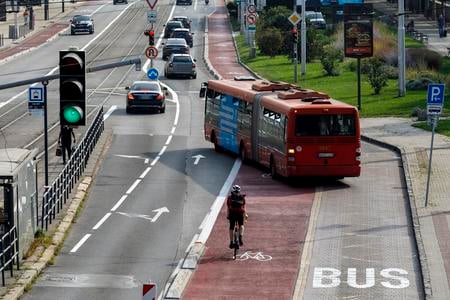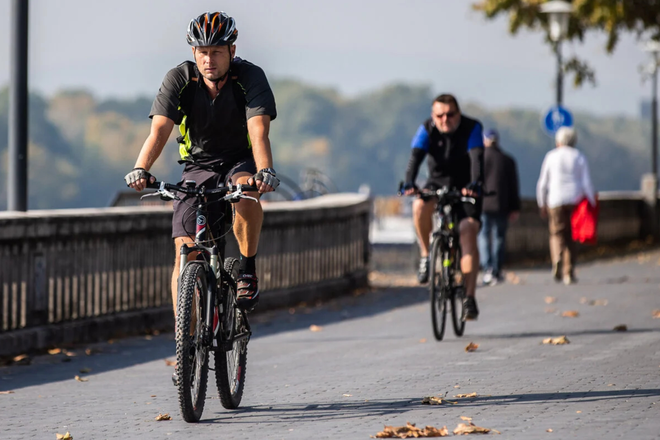For years, the bicycle was considered a means of recreation. However, that is slowly changing as it is becoming a common means of transport. Automatic counters also show that the number of people using bicycles to commute to work or school is increasing.
Still, the issue of cyclists' safety in road traffic has never been systematically addressed. Despite the fact that a cyclist - a regular road user - is obliged to know traffic regulations, there is no driving school equivalent for them. Transport Ministry campaigns and various forms of traffic education in schools supplant the missing schools.
"In order for traffic to be safe, cyclists need to put themselves in the shoes of both drivers and pedestrians," says national cycling coordinator Peter Klučka, adding that "being more vulnerable than other road users, [cyclists] have to follow the regulations all the more."

To work and school
There are almost 1,200 kilometers of marked cycling routes in the Bratislava region, used by more than three million cyclists last year. With 475,000 cyclists, the busiest one is the Dolnozemská route in Petržalka.
Automatic counters, which collect data on cyclists' traveling in the field, have shown that people are not only using bicycles for recreation, but increasingly for commuting to work or school, as evidenced by almost 200,000 people using the cycling route on Páričkova Street next to the Nivy bus station.
Regulations regarding cyclists can be found in the Section 55 of the Road Traffic Act.
"Compared to other violations of the act on Bratislava's streets, there have been very few violations by cyclists," reports the Bratislava City police spokeswoman Barbora Krajčovičová. "If a cyclist committing an offense is caught, it's usually for disobeying the ban on entry with a bicycle, riding on the sidewalk or using a pedestrian road crossing."

 Cyclists on the Danube riverbank. (source: SME - Marko Erd)
Cyclists on the Danube riverbank. (source: SME - Marko Erd)